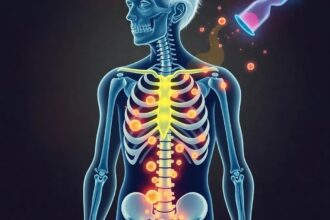Stanford study uncovers two distinct aging waves, highlighting midlife biomolecular shifts and potential precision health interventions to enhance longevity and healthspan.
A recent Stanford study has identified two distinct aging phases, marking crucial midlife biological changes.
Introduction
Aging is a complex process that has puzzled scientists for years. A breakthrough study conducted by Stanford University researchers has shed light on the existence of two distinct waves of aging, unveiling crucial insights into the biomolecular changes that occur in midlife. This discovery could pave the way for precision health interventions aimed at improving longevity and healthspan.
Two Waves of Aging
According to the study, the first wave of aging appears to begin around the mid-30s, with significant biomolecular changes identified. The second wave starts in the mid-60s, marking another crucial phase of biological transition. Senior author and geneticist, Dr. Michael Snyder, was quoted in a recent university press release saying, “These two waves suggest that aging is more dynamic and complex than we previously thought.”
Midlife Biomolecular Shifts
Midlife, often considered a stable period in terms of health, is now understood to be a time of significant biological change. These shifts include variations in protein levels, metabolites, and other biomolecules that influence various bodily functions. The study utilized cutting-edge technologies such as multi-omics profiling and longitudinal data analysis, offering a comprehensive view of the body’s internal dynamics during aging.
Health Implications and Precision Health
The identification of these aging waves has profound health implications. Understanding the biomolecular shifts that occur can aid in early intervention strategies, allowing for personalized and precision health approaches. Dr. Snyder emphasized, “By pinpointing when these changes happen, we can better target interventions that enhance healthspan and quality of life.”
Conclusion
The Stanford study’s findings mark a significant advance in aging research, offering hope for improved intervention strategies that could delay or mitigate age-related decline. As precision health continues to evolve, these insights will play a vital role in shaping future healthcare approaches, potentially extending the period of healthy living for many individuals.




